Authentic Spanish restaurant with flamenco show in Barcelona
Why choose Tablao Flamenco Cordobes to enjoy a dinner with flamenco show in Barcelona?
Located in the heart of La Rambla in Barcelona, Tablao Flamenco Cordobes offers a unique cultural experience that combines daily 70-minute shows starring exceptional dancers, singers and musicians, along with a gastronomic journey through the traditional flavors of Catalonia and Spain. Our chef, Jordi Narro, is responsible for the gastronomic proposal, which includes a careful selection of traditional seasonal dishes, proximity and options for all palates. We have vegan and vegetarian options, as well as a Halal certificate and alternatives for celiacs.
Dinner includes all drinks and preferential seating during the show.

Dinner with flamenco show in Barcelona at the authentic Tablao Flamenco Cordobes
While the flamenco show is the highlight of the evening, a full immersive cultural experience begins before: with our dinner that complements and enriches the visit. It is a gastronomic tour of Spain and Catalonia through more than 40 traditional dishes. From iconic Catalan recipes to classic Spanish specialties, this is a unique opportunity to sample the essence of the region's rich culinary heritage in a single evening. You can help yourself to a buffet of the finest traditional products, while a selection of special dishes is offered directly at the table, with the constant attention of our staff to ensure that every moment is perfect. There is no other place in Barcelona where you can taste such a wide variety of typical dishes, in a single space and an unlimited drinks offer, with an excellent quality-price ratio. It is, without a doubt, the perfect way to immerse yourself in the local culture before enjoying an unforgettable flamenco show.
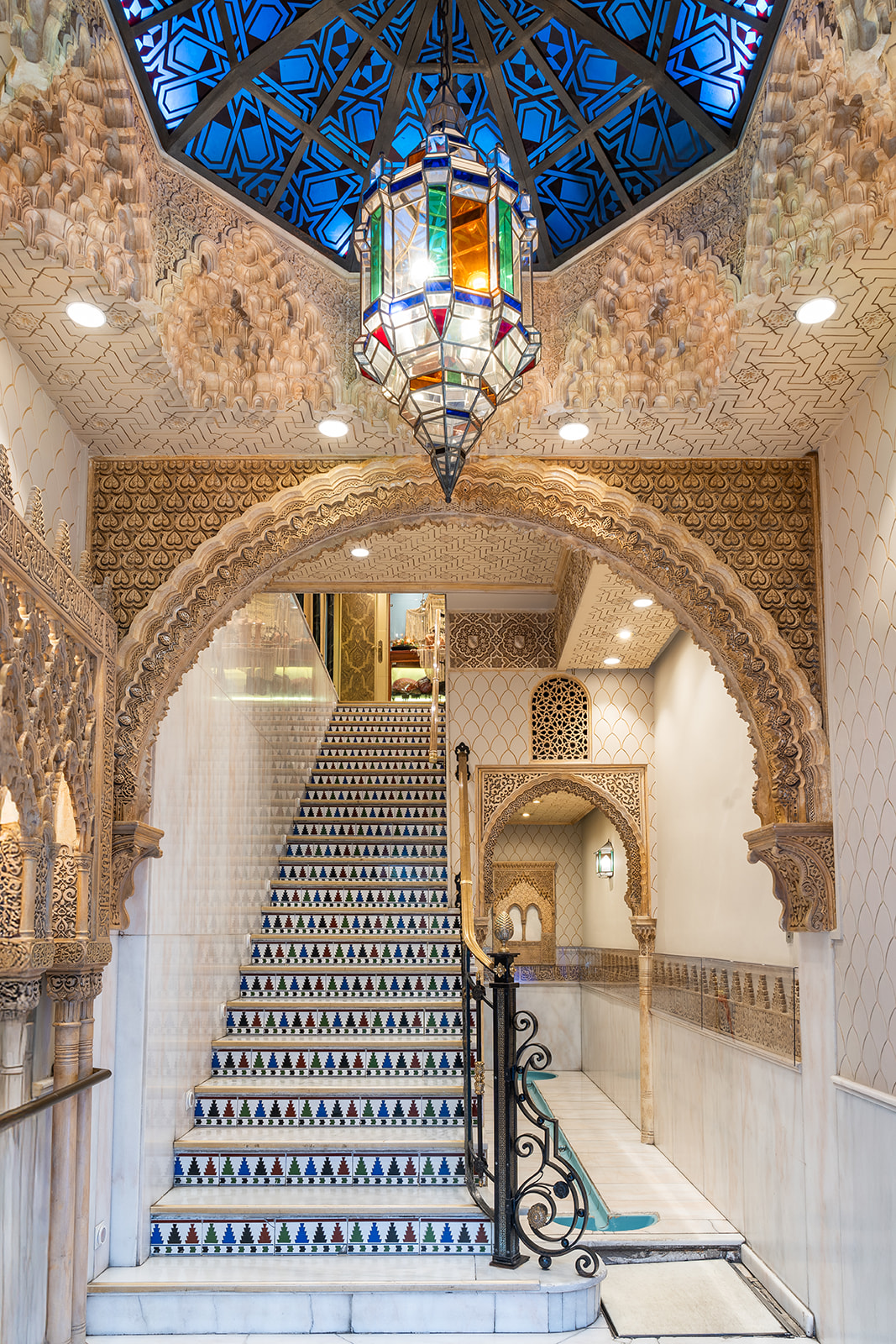
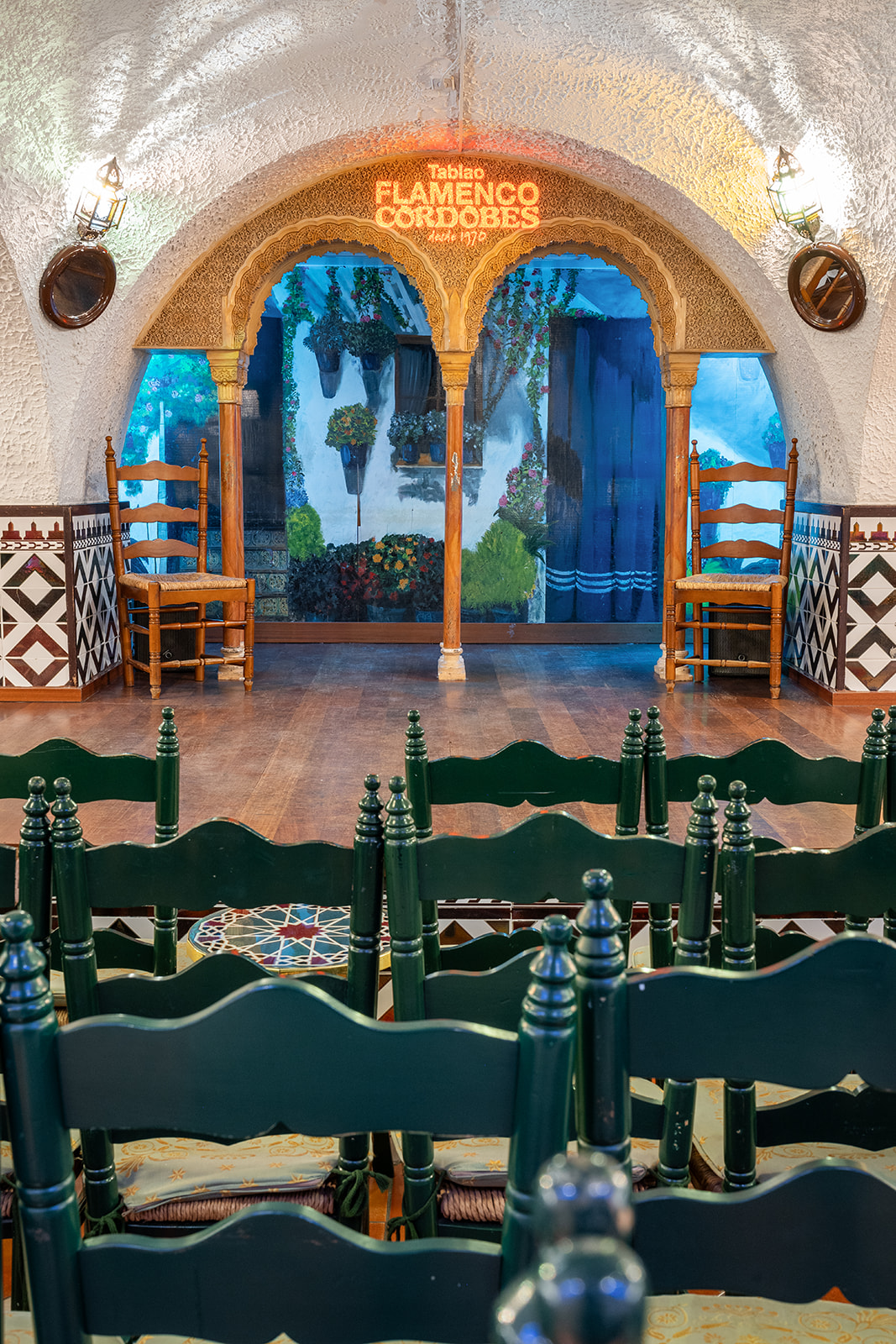
The dinner takes place in dining rooms inspired by the Nasrid forms and architecture of Andalusia, extraordinarily decorated by the Master restorers of the Alhambra in Granada, Napoleón Morillas and Carlos Lachica. Our fidelity to these decorative motifs is intended to recall the Arab-Andalusian culture as one of the sources of the roots of flamenco. Equally important are the views from the dining room: La Rambla is presented to the diners in all its bustle, as a reflection of the soul of Barcelona..

Once dinner is over, visitors are escorted to the Tablao, to enjoy the centerpiece of their visit: the expected performance of some of the best flamenco artists in Spain, in the framework of an authentic Tablao Flamenco, which is the name given to unique spaces, unique in the world, where only flamenco shows are offered. With reduced seating capacity, between 80 and 100 people, our venues guarantee an intimate atmosphere that allows a deep connection between artists and audience, transmitting emotions through the rhythm of the guitars, the heartfelt singing and the hypnotizing movements of the dancers. During the show, a glass of cava or sangria, traditional drinks that complete the authentic experience, will be served.
Once again, it is essential to highlight the architectural structure of the space: the vaulted ceilings make it possible to dispense with microphones, which produces a natural surround sound that, together with the sound of the tablas and the zapateados, creates an absolutely immersive experience

Our gastronomic options
The Gastronomic Tour
The Gastronomic Tour is an all-inclusive culinary adventure that invites you to explore more than 40 traditional dishes from Spain and Catalonia. This buffet feast is much more than a simple dinner: it is an immersion in local traditions and flavors. A cultural activity that brings together in a unique experience, local gastronomy, a view of La Rambla, historical and cultural ambiance, and an authentic flamenco show in a traditional Tablao.
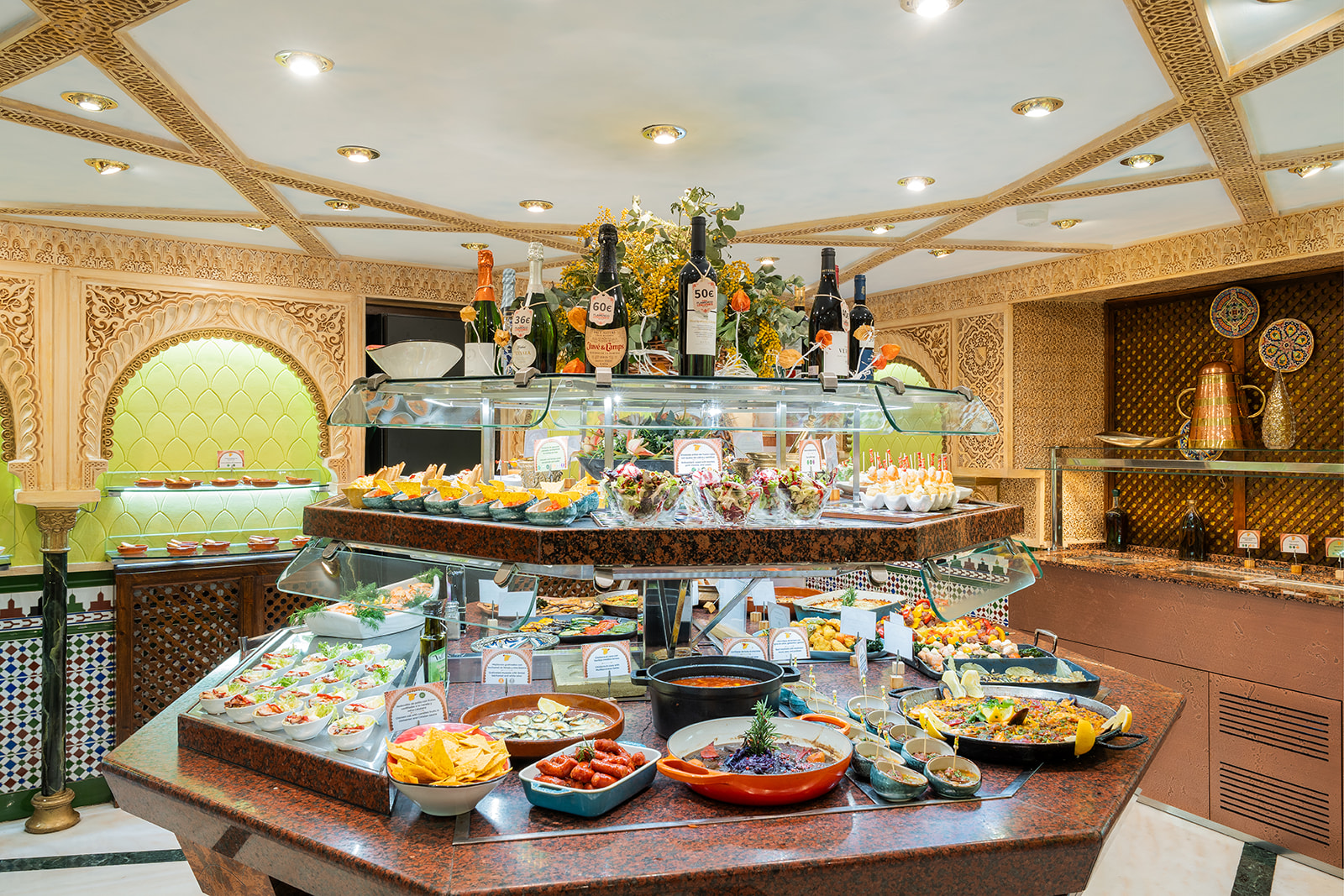
Discover our traditional cuisine, including:
Catalan specialties: savor the specialties of Catalonia with dishes such as the famous crema catalana, patatas bravas, butifarra skewers, trinxat (seasonal), mushroom cannelloni....
Classics of Spanish gastronomy: Delight yourself with iconic recipes such as paella in its sea and mountain version and in its vegetable version, Iberian ham, prawns, octopus on seasoned potato, salmorejo, horchata de chufa (tiger nut milk), among others.

Selection of tapas and pintxos
Explore the vibrant world of tapas and assorted pintxos (crab, cod brandade or cheese), tuna stuffed eggs, meatballs in sauce and more.
Main courses: traditional local meat and fish cuisine; cheeks in red wine, chicken in chilindrón sauce, grilled salmon, marinated sardines, etc.

Children's options: macaroni a la barcelonina, chicken in batter with french fries, cannelloni and other options.
Our menu is a celebration of traditional gastronomic culture. Ideal for those who want to taste a wide variety of dishes and enjoy the diversity of seasonal cuisine, with local products.
Some of the dishes may be subject to seasonality and not all of them may be available at the time of your visit.
Our staff will be able to indicate you all the recipes and their allergens.

Tapas Route: A selection of local tapas and pinchos
At 4:30 pm, for a more intimate and personalized dining experience, we also offer an exquisite selection of tapas and pinchos served at the table. A smaller selection to provide a lighter and late night offering. Enjoy some of our most popular dishes, carefully crafted in a homemade manner that delight the senses. Our menu includes:

Traditional option:
Appetizer with olives and cheese cubes.
A first tray of cold starters: salmorejo cordobés, patatas bravas, assorted Basque pinchos, stuffed egg.
A second tray with hot starters: mini seafood paella, cheeks in red wine sauce, fried fish and meatball.
A third tray with desserts: crema catalana, horchata and truffle.

Vegan tapas
Olive appetizer.
First cold tray with salmorejo cordobés, avocado dressing, antiox salad, and escalivada pintxo.
Second hot tray with mini vegetable paella, eggplant with Cordovan style honey, and mini vegan hamburger.
Desserts: glass of assorted fruit and horchata.
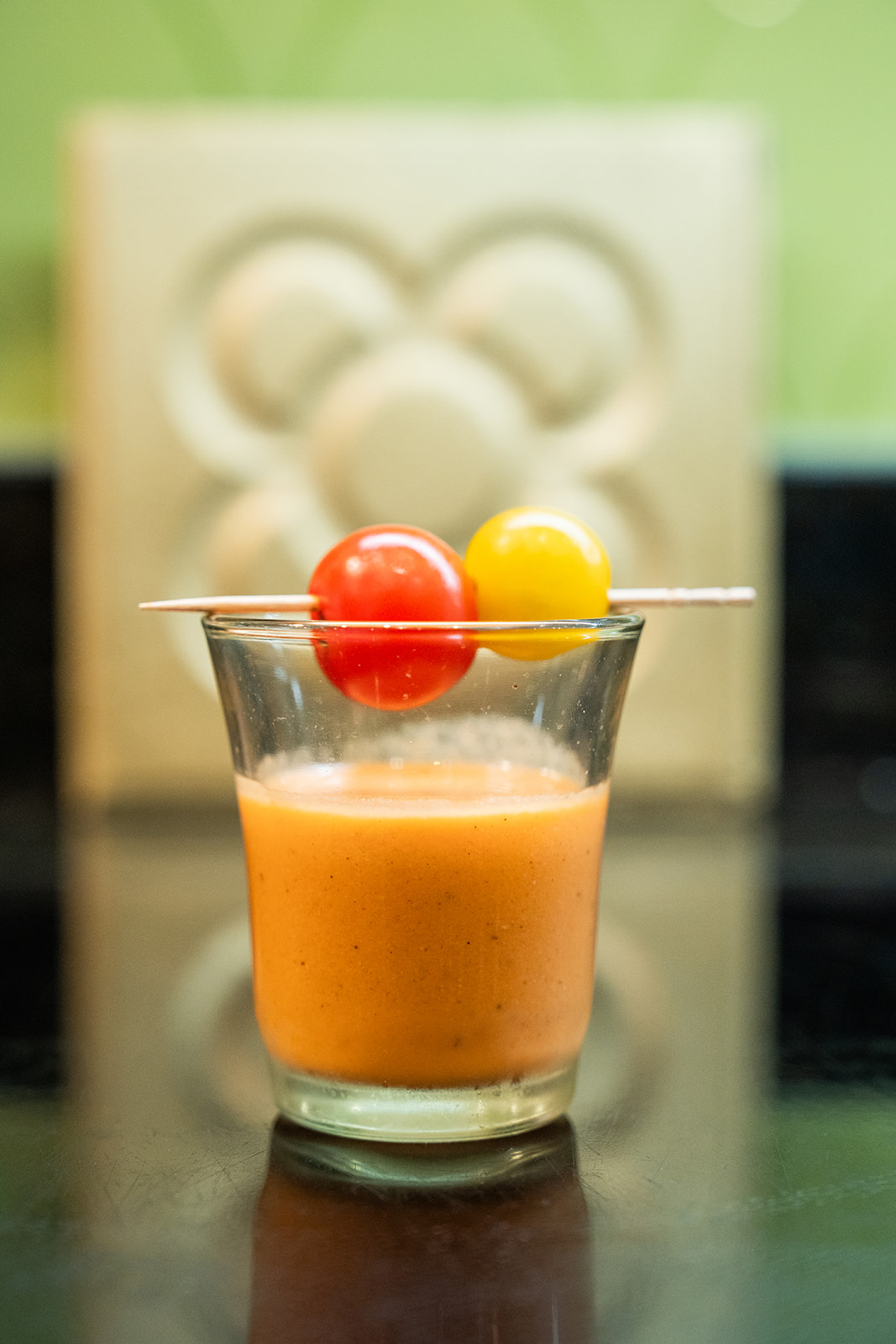
It is the perfect option for those who prefer a more relaxed dining experience, allowing you to savor each dish while enjoying the intimate atmosphere of the tablao. Our room is not defined as a “tapas bar”, as our selection of tapas and pinchos offers a delicious combination of flavors and textures that perfectly complement the vibrant energy of the flamenco show.
It is a unique opportunity to discover traditional Catalan and Spanish gastronomy while preparing for the best part of the evening: the flamenco show with world-class artists.
At Tablao Flamenco Cordobes we know that each visitor is unique. That's why we adapt our offerings to all food preferences, with gluten-free, halal, vegetarian, vegan options and more in each of our experiences.
All of our dishes are prepared daily with local ingredients, ensuring an authentic and flavorful experience.
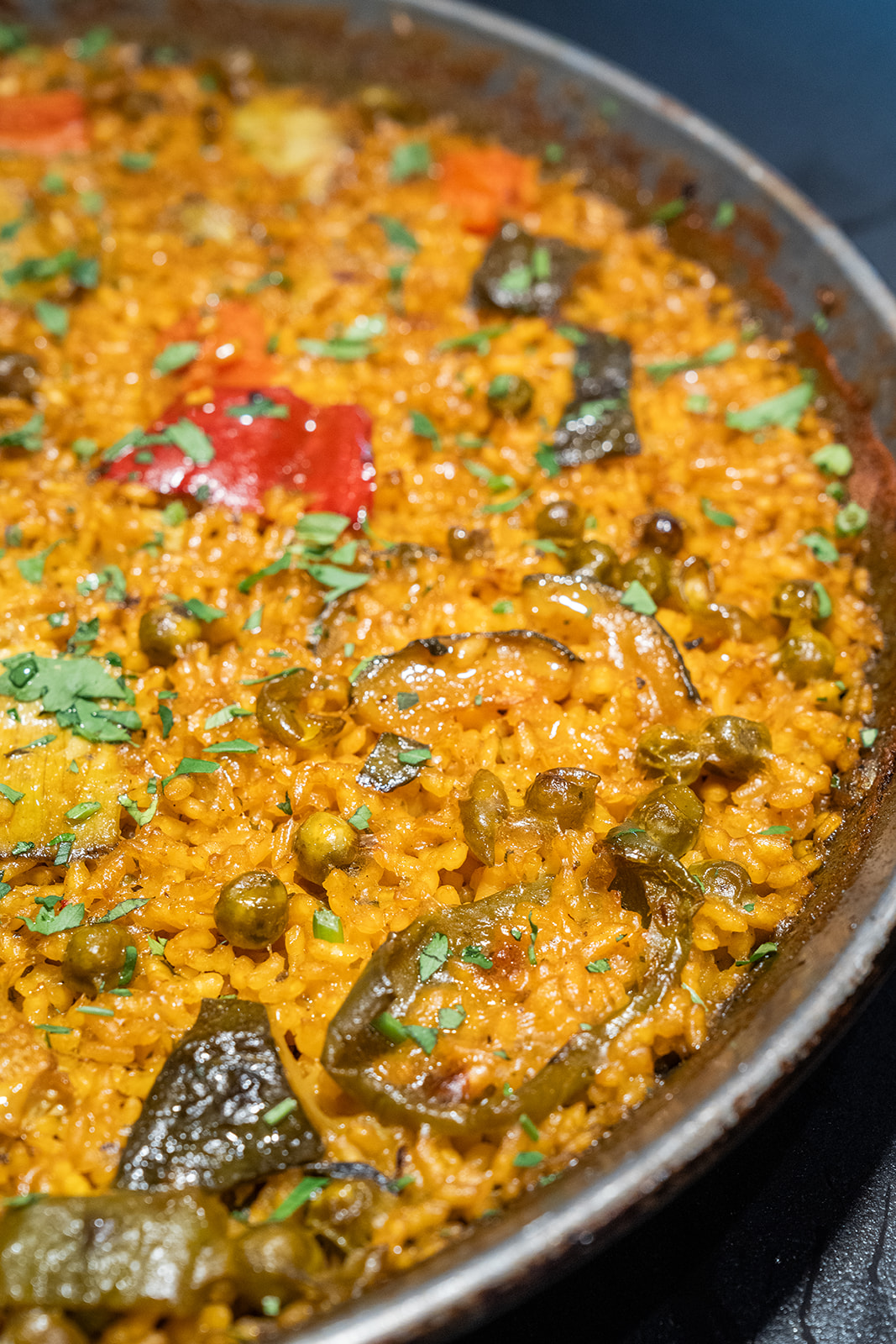
Whatever your choice, you'll enjoy unlimited beverages, including wines, sangria, cava, beers, soft drinks and more.
Whether you opt for the extensive Gastronomic Tour or the selection of tapas and pinchos, both options are the perfect complement to the flamenco show, enriching your evening with the traditional flavors of Spain.
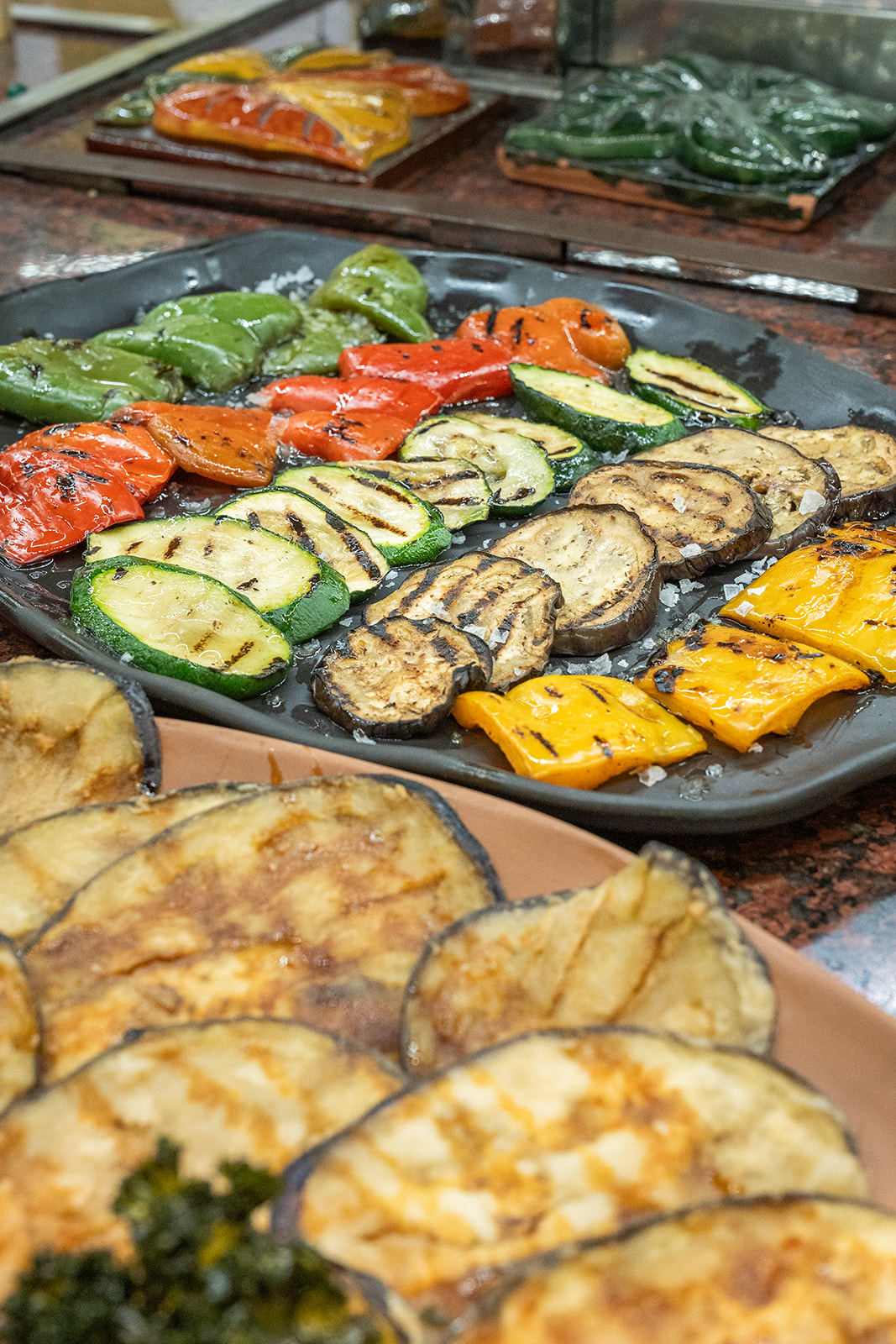
What makes Tablao Flamenco Cordobes unique?
📍Beverages included
📍Preferred seating during the show.
📍Vegan, vegetarian, Halal certified and gluten free options.
Quality:Flamenco shows in which the presence of the most important flamenco artists and emerging stars is guaranteed.
Authenticity: Tablao Flamenco Cordobes is run by a family of artists. Founded by guitarist Luis Adame and dancer Irene Alba, it is now run by the second and third generation. Their love for flamenco guarantees the authenticity and value of their shows. El Tablao Cordobes is an authentic Tablao.

Heritage: A historic place with more than five decades of flamenco tradition. A small institution in the world of flamenco throughout Spain and the emblematic place of flamenco in Barcelona.
Location: Located in La Rambla, in the heart of Barcelona. The place where historically the theaters, cabarets and shows were located in Barcelona.
Intimacy: It is an authentic tablao. A cozy and cozy space that guarantees that each spectator feels the connection with the show. An extraordinary sound without microphones.
Plan your visit
📍 Address: La Rambla, 35, 08002 Barcelona.
⏳ Show times: Multiple performances daily. Check availability when booking.
📩 Reservations: Secure your seat online or contact us directly.
Bon Appetite!
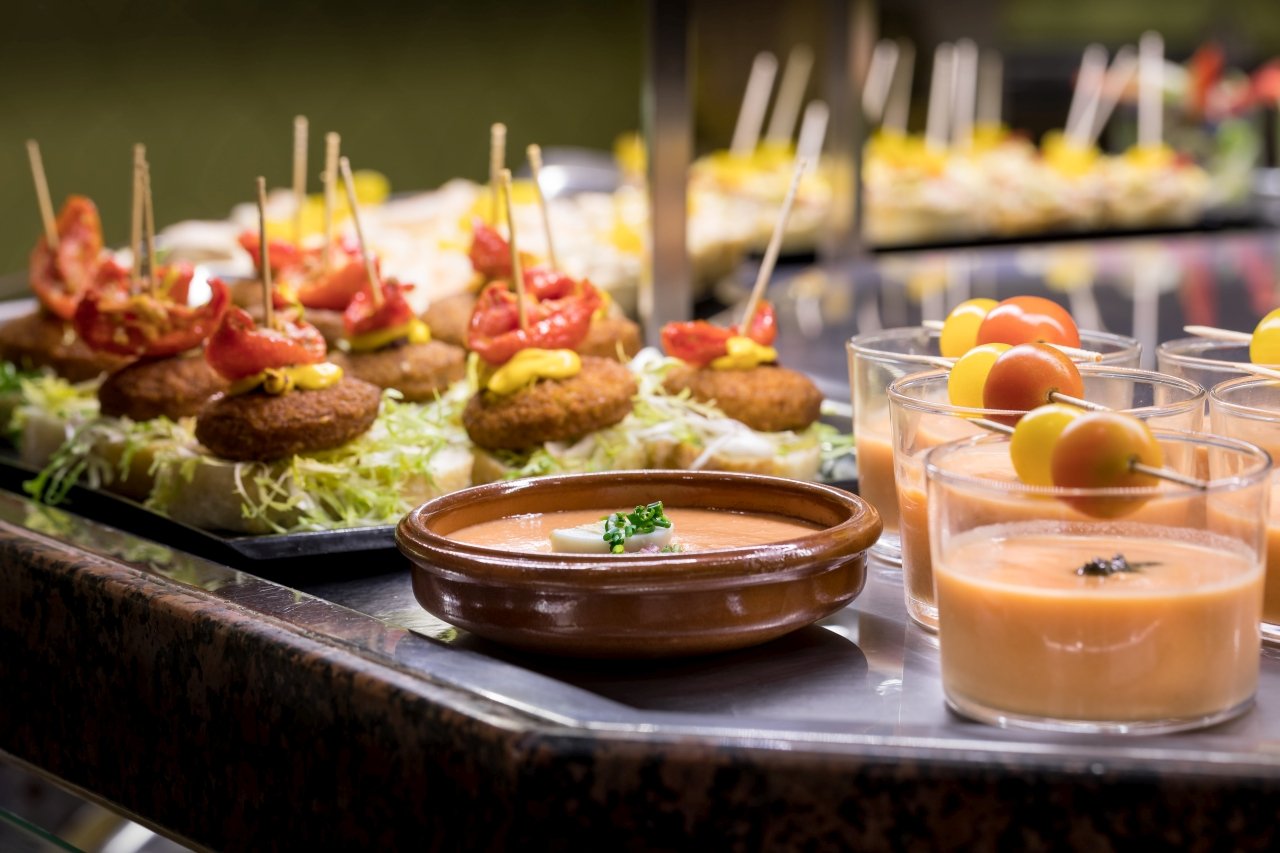
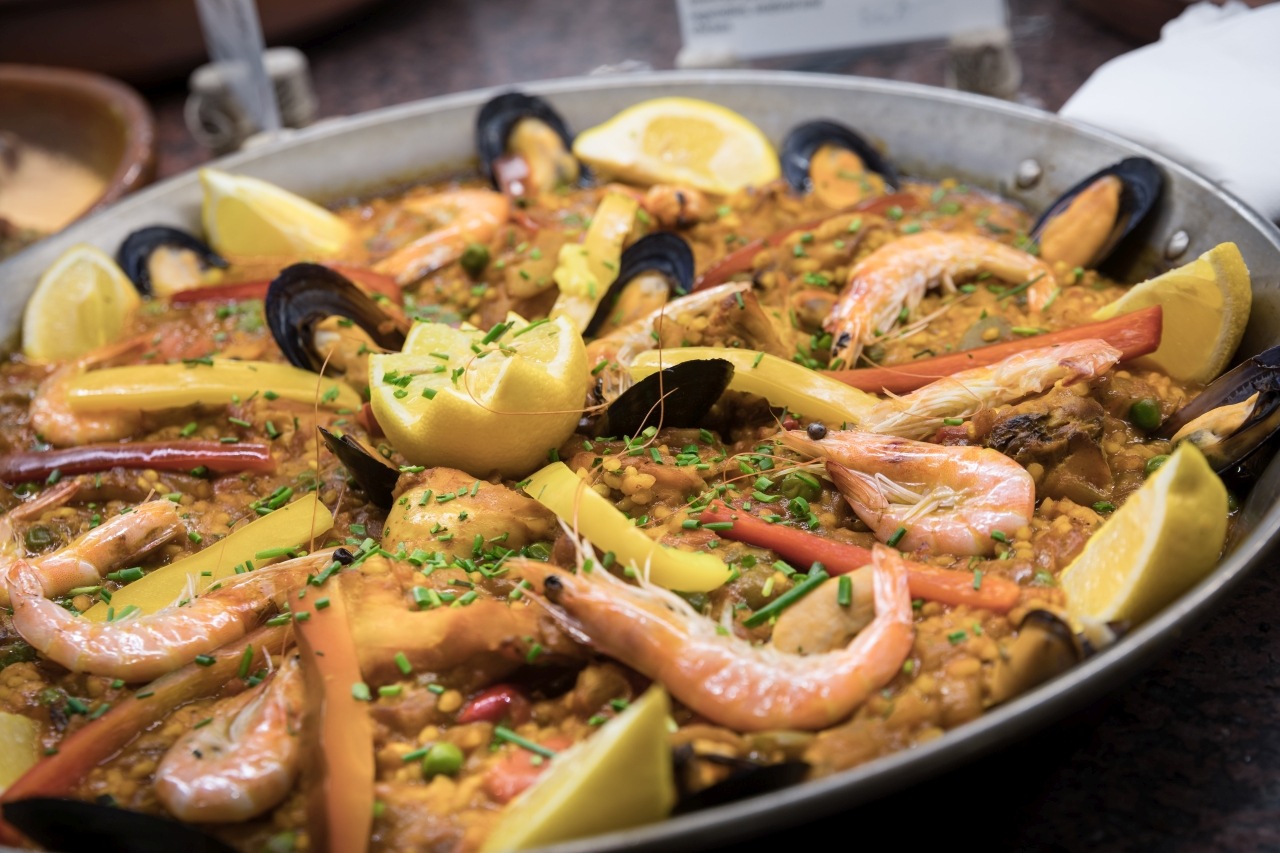
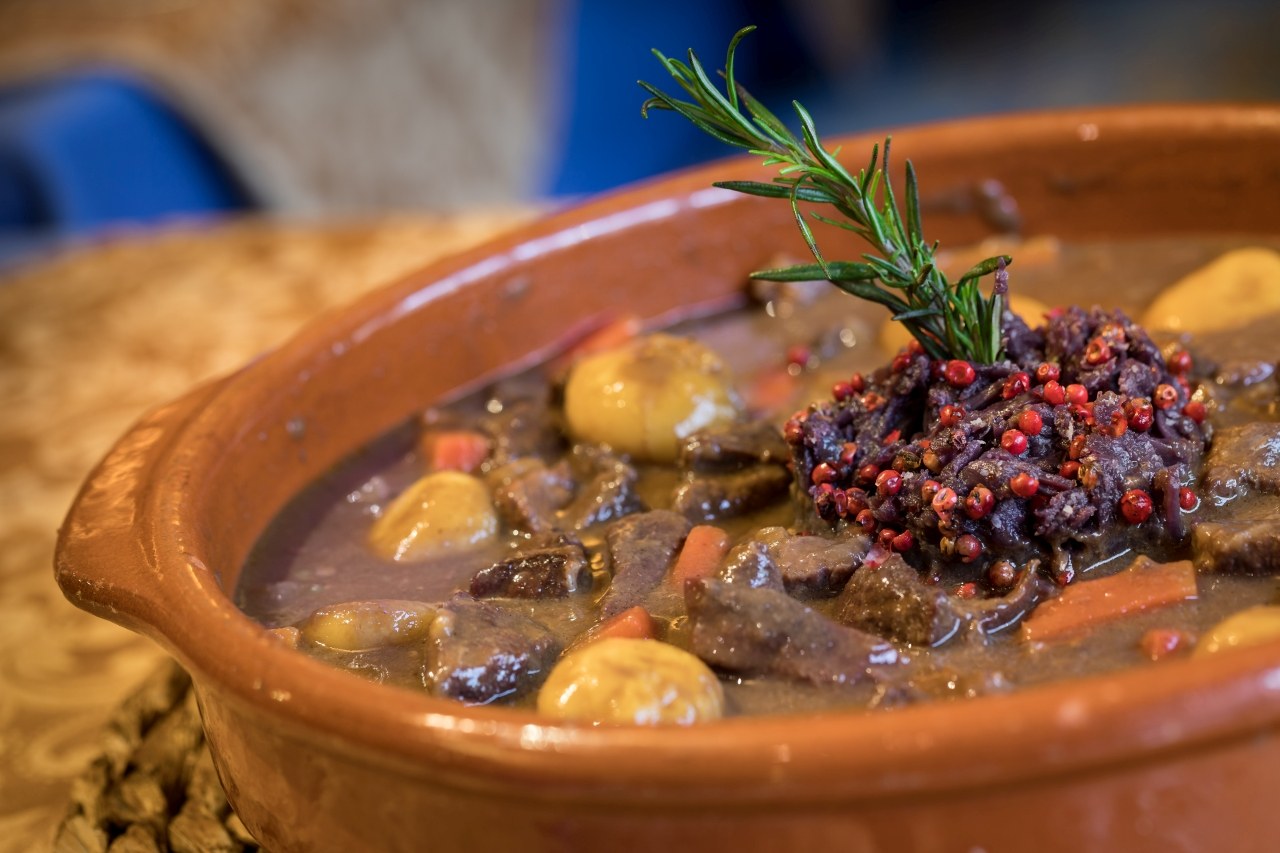
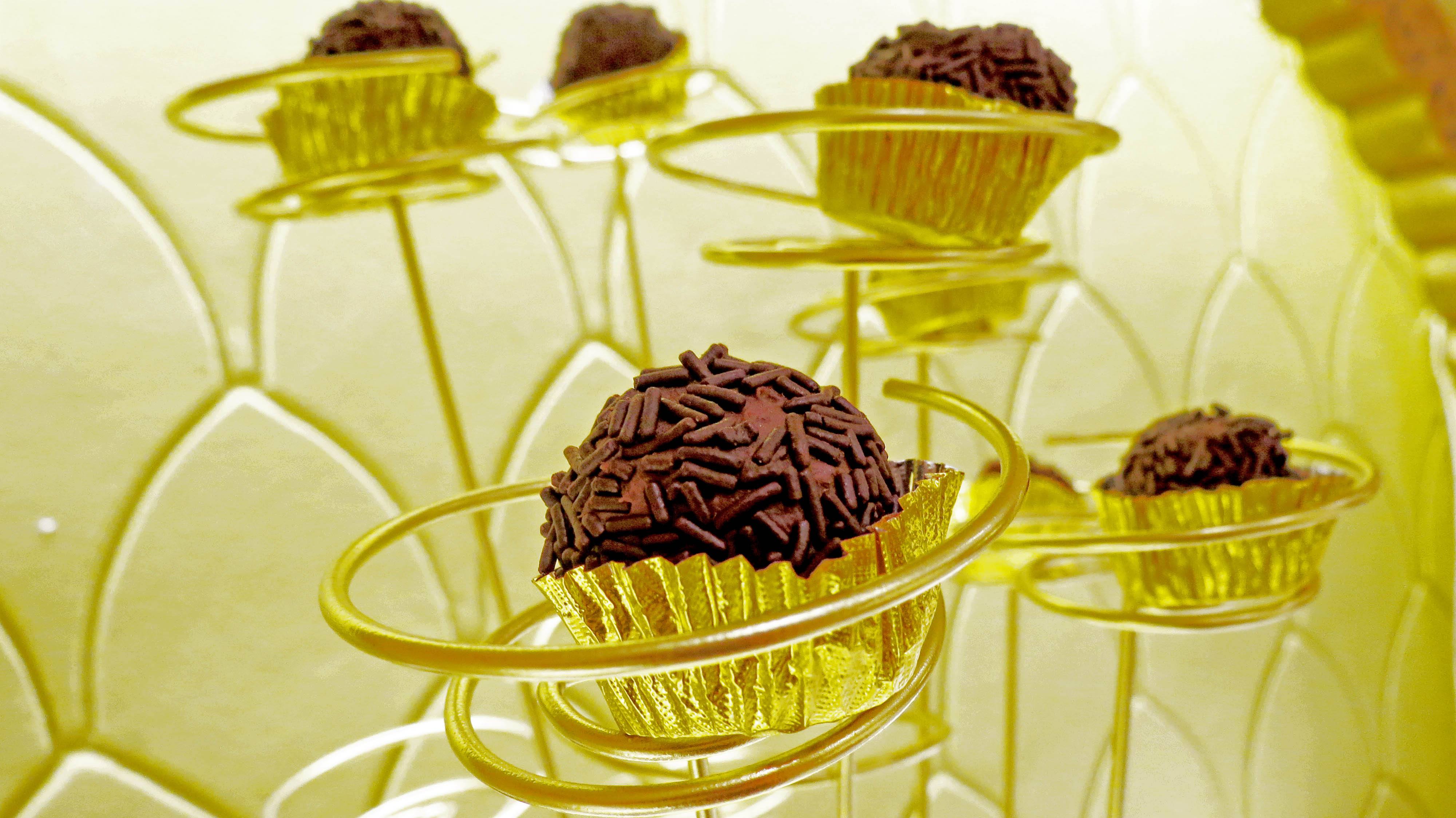
Atmosphere
The decoration of Tablao Flamenco Cordobes Barcelona, inspired by the Nasrid forms and architecture of Andalusia at the end of the 15th century, has been handcrafted by the official restorers of the Alhambra in Granada, Napoleon Morillas and Antonio Zubeldia. Our fidelity to these decorative motifs aims to remind Arab-Andalusian culture as one of the sources from which the root of flamenco drinks.
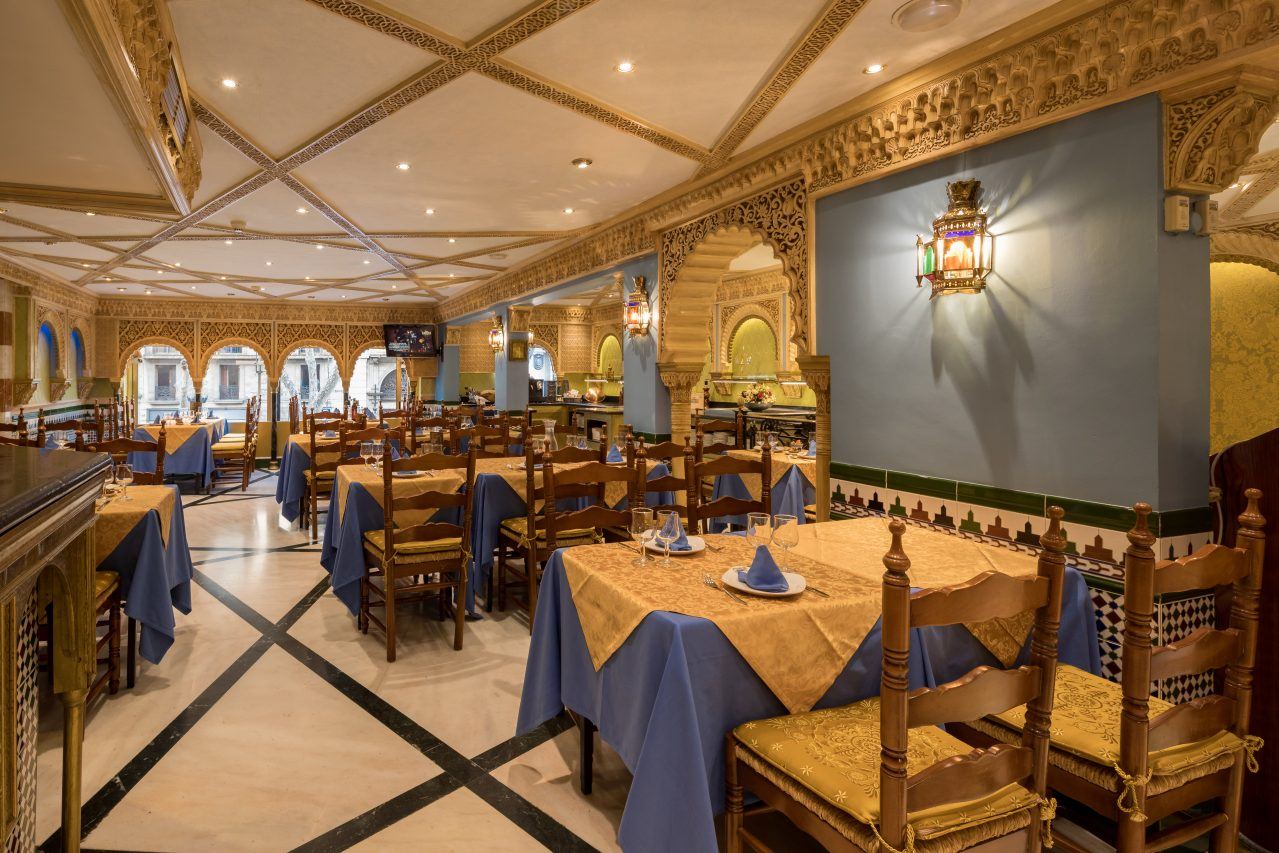
Origins of Nazarí Art
Nasrid art or Granada art represents the last stage of Hispano-Muslim art. Its development phase includes from the 13th to the 15th century and laid the foundations for the future birth of Mudejar art. Its main area of influence was extended by the Nazari Kingdom of Granada, Barbary and various areas of the Iberian Peninsula. The origin of Nasrid art begins with the decline of the Almohad empire, beset by the proliferation of small kingdoms in al-Andalus during the 13th and 15th centuries. Years later, in 1237, the Nasrid kingdom was born and its capital was located in Granada for more than 200 years. The call Reconquista of the Christians was increasing the pressure and forcing the kingdom to give ground until, in 1492, Granada capitulated and with it the last Islamic stronghold, ending the Nasrid art in al-Andalus. The main paradigm of this art is found incontrovertibly in the Alhambra in Granada. Its name means Red Castle and comes from the Arabic "Qalat al-Ambra".
The fascinating building synthesizes the Islamic palatine architecture with military architecture, which provides elements of fortification. The building has been recognized as a World Heritage Site by UNESCO and is an incomparable symbol of Islamic palatine architecture. The Alhambra, together with the buildings and buildings of Granada, allow, due to its shape, colors and style, to establish the general framework of this art as an evolution of Hispano-Muslim art. Characteristics of this art are complex ornamentations, used to mask the poverty of construction materials such as stucco plasterwork, tiled skirting or painted decoration. Another very common feature is the cylindrical shaft column and the capital of two bodies, similar to the decorations of the tablao, one cylindrical decorated with ribbons and another cubic with ataurique. The wooden roofs are usually alternated with vaults of muqarnas made of stucco and the most common arches are half-stitched and pebbled.

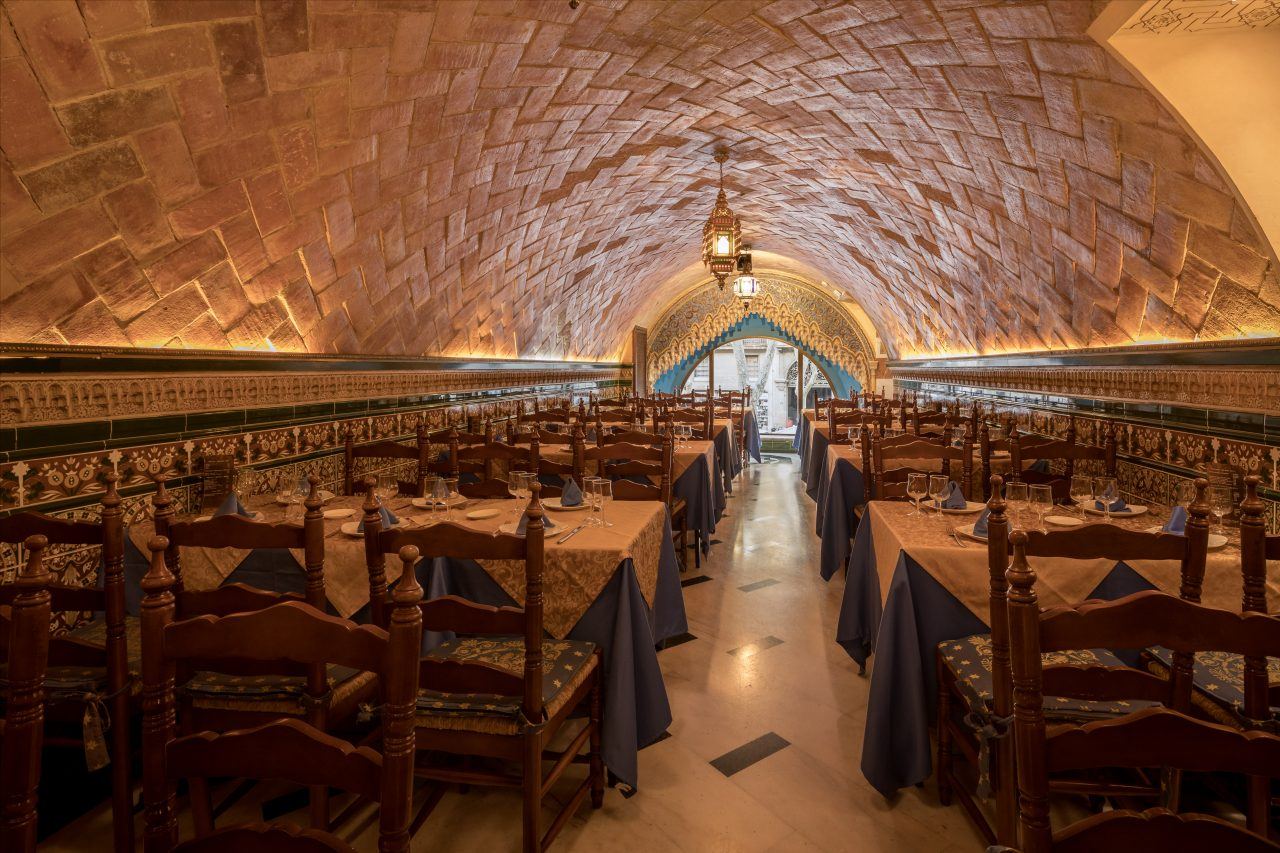
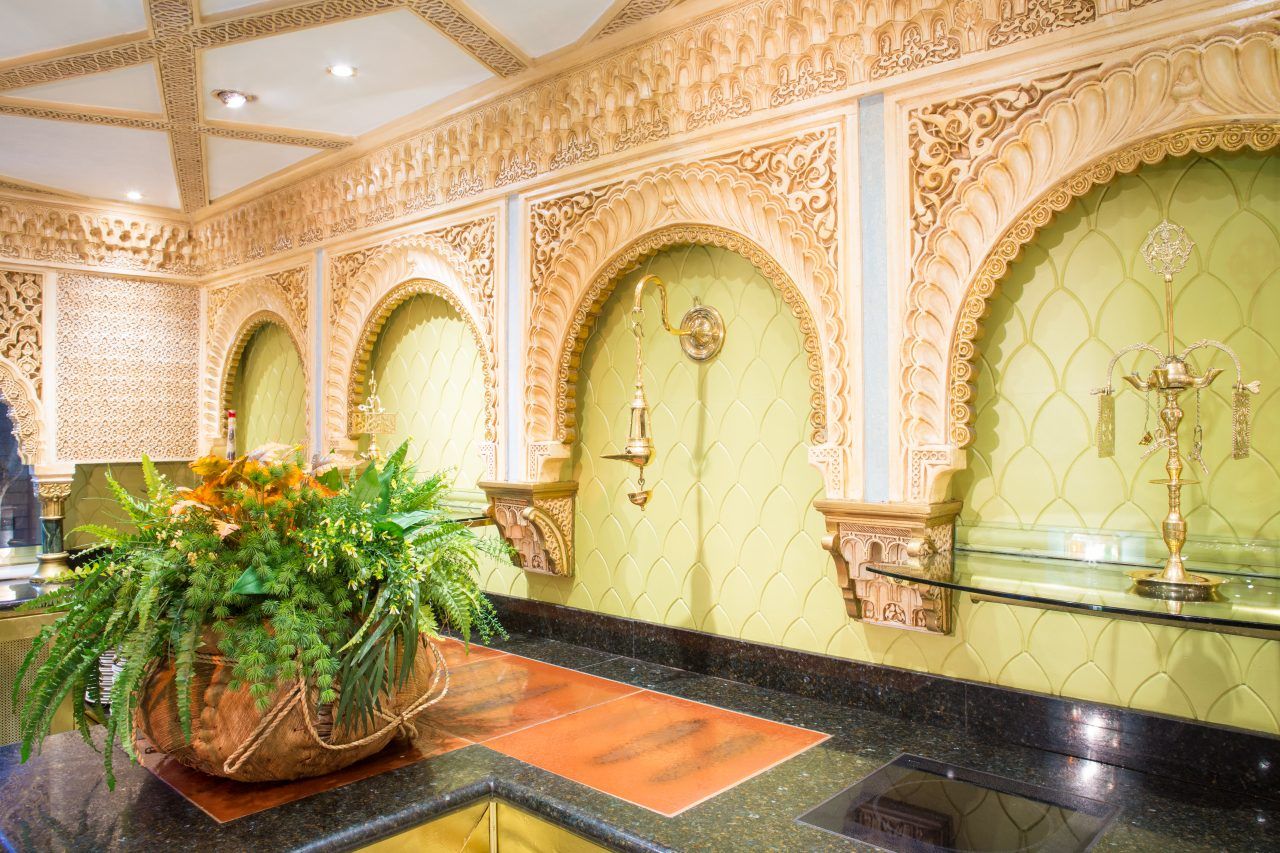
Relationship with the tablao
Most experts agree in relating Arabic music to flamenco, yet it is impossible to know with certainty because the transmission of knowledge at that time was done orally. The most accepted explanation is that flamenco was developed on the basis of popular and Andalusian music, creating melismas with great influences of Arab elements in Andalusia at the beginning of the 20th century. According to the flamenco scholar, HipólitoRossy, you can find a multitude of similarities between flamenco and Arabic musical culture: "... in the constant and abusive use of notes of adornment, trills, melismas, dragons or portamentos (...) El use of upward support at the beginning of the song or some twists or phrases within the same song (...) The inclusion of zambra mora in flamenco and its influence on some Murcian and Andalusian songs, such as flamenco tango, taranto and binary rondeña. "This music and this art was developed in flamenco tablaos, the historical setting of this art that has undoubtedly influenced some forms of expression of Spanish art and culture of the 19th and 20th centuries.

